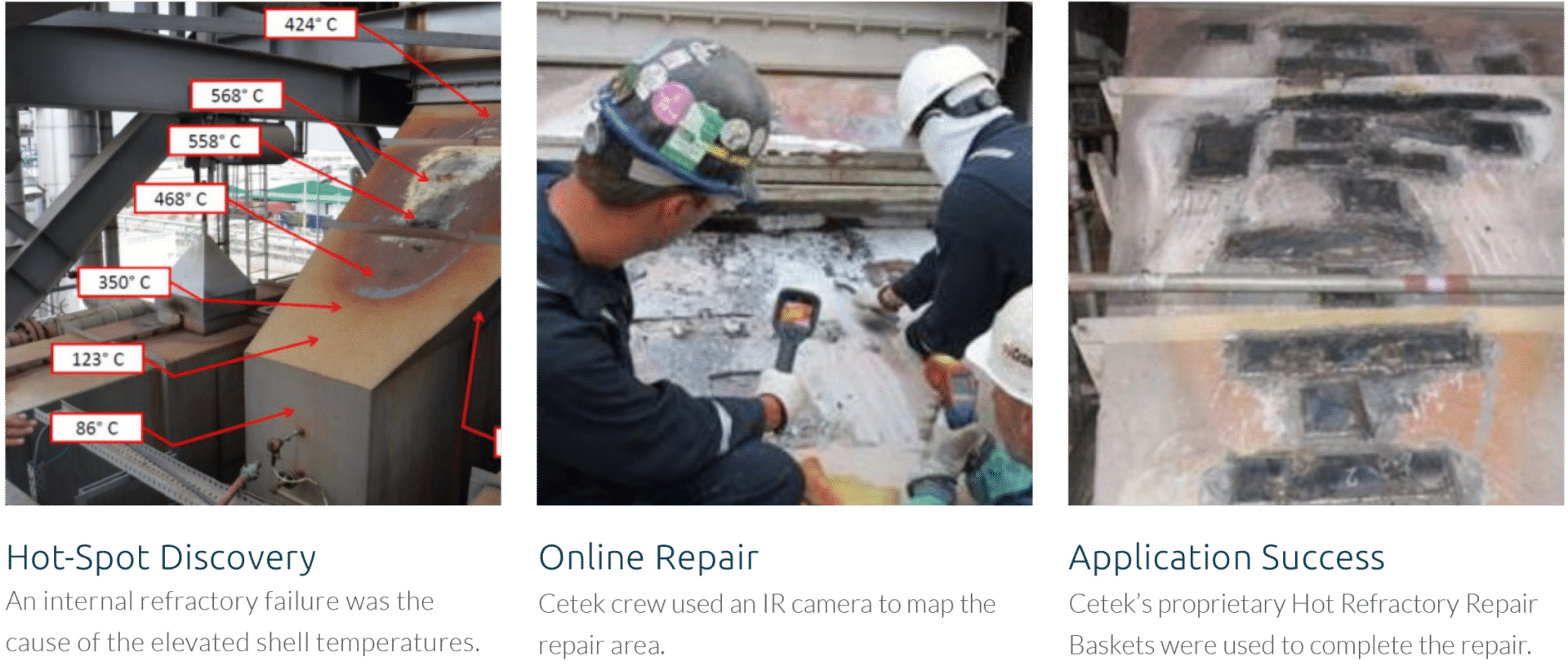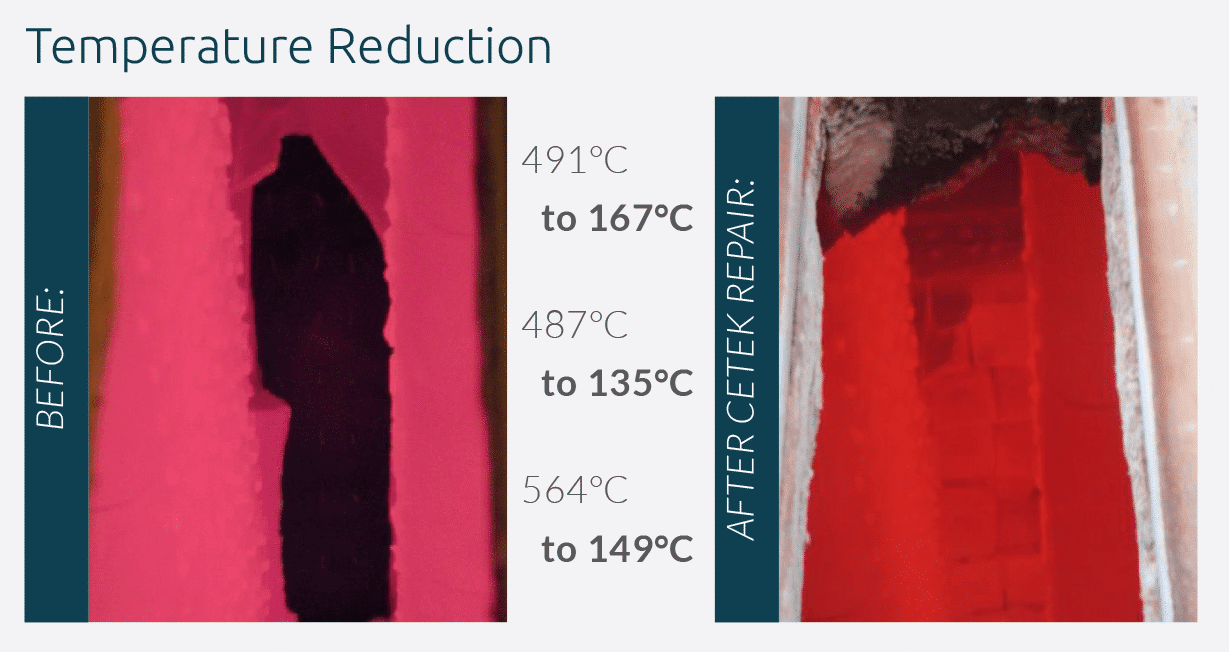Heater Shell Temperature Fixed with Hot Refractory Repair
Elevated Heater Shell Temperature Uncovers a Hot Spot
Elevated Heater shell temperature led to a discovery of a hot-spot on the transition shell ducting, from the radiant section to the convection section of the CCR Platformer. In some areas, external shell temperatures exceeded 560°C/ 1040°F.
After further investigation, it was determined that an internal refractory failure was the cause of these elevated shell temperatures. The existing ceramic fiber blanket failed and fell from the transition ceiling, leaving the shell internals exposed to hot flue gas.
Elevated Heater Shell Temperature Caused Loss of Production
A refractory failure left the internal shell exposed to hot flue gas. As a result, the radiant temperature on the CCR platformer had to be decreased, causing production loss.
Online Refractory Repair without a Shutdown
IGS have successfully completed this repair online using Hot Refractory Repairs technology, safe and with no additional impact to production.
Daily Production Losses
Plant operator used steam to cool the overheated shell to prevent immediate shell failure. Steam lines were only able to provide a maximum decrease of around 46°C/ 83°F on the exposed metal.
Due to the concern of overheating the shell to failure, the radiant temperature and production rate on the CCR Platformer had to be decreased, resulting in a loss of production of over $400,000 per day.

Rapid Reduction of the Heater Shell Temperature
Cetek has successfully completed this repair in four shifts, with no additional impact to production. A total of only 12 days elapsed from the discovery of the hotspot to the completed repair.
The heater shell temperature decreased by an average of 300°C/ 572°F. Production rates were then immediately allowed to return to full capacity.
Without this online repair, productivity would have had to be continually decreased until the next scheduled outage in four months’ time. The savings achieved from the application of Hot Refractory Repair compared to lost production are estimated at $40,000,000.

Free consultation with an IGS Subject Matter Expert
IGS is here to provide information, answer questions and create an effective solution for your needs.
